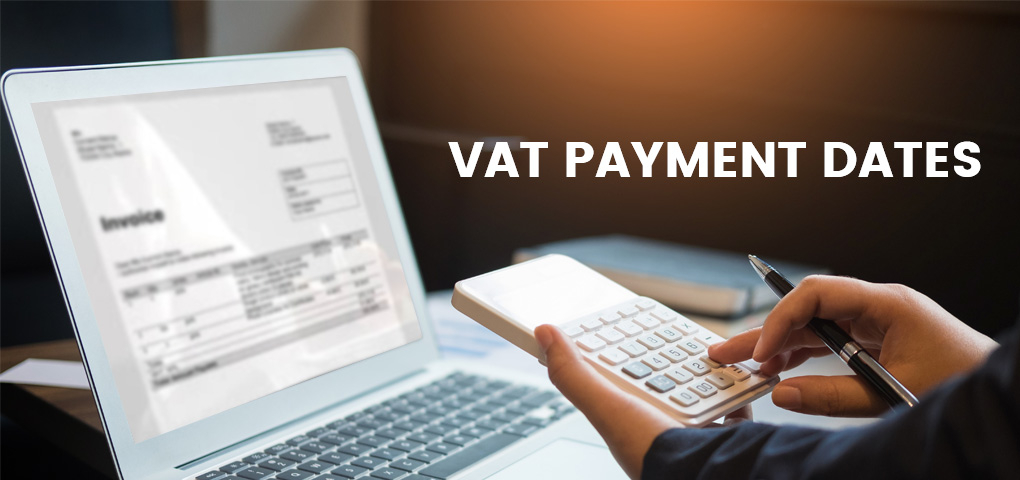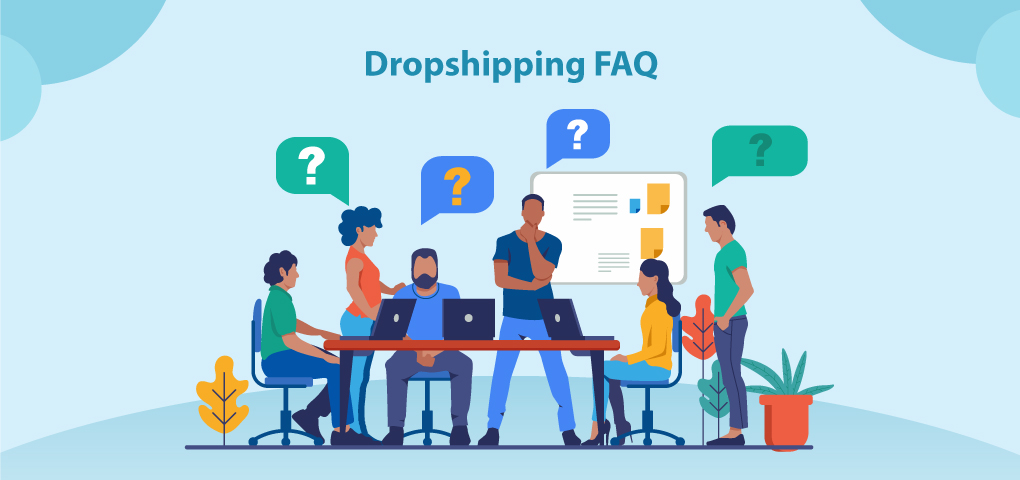VAT or Value Added Tax is an indirect tax that is levied on the sales of goods and services. It is categorized as an indirect tax because it is collected by the businesses on the behalf of the Government. To avoid the fine payment or surcharge, it is essential for you to pay your VAT Returns and Dues within the VAT payment deadline. For that, you must have a clear understanding of the VAT Payment Dates and VAT deadlines. So, if you want to know everything about VAT Payment Dates and VAT Submission deadline, then we have got you covered.
In this article, we have included well-grounded and reliable information that will surely help you to clear all your doubts and queries relating to VAT dates and deadlines. Let’s start then! But before moving forward to the VAT Due dates and deadlines, firstly, we will have a look at how Brexit impacted the VAT!
What are VAT Changes after Brexit?
Brexit had a significant impact on the VAT system that leads to some changes in the VAT. After Brexit, the UK is no longer part of the EU VAT area, and therefore the UK has now become a third country. This specific transition has changed the way how businesses manage the VAT on the goods and services from EU countries to Britain and the other way round.
So, basically, after Brexit, some changes were introduced in the VAT payment system and its related aspects. Do you want to know what those changes are? Well, have a look at the list of changes that were made to VAT after Brexit!
- EC Sales List
The first change is related to the EC sales list. All the people who have previously produced EC sales list will no longer be required to do so with effect from 1 January 2021.
- Distance Selling
Distance selling is generally a process where a UK VAT registered company sells goods and delivers those goods to a non VAT registered customer in an EU country. So, after Brexit, the distance selling threshold will no longer be applied to UK companies from 1 January 2021. The company selling goods applies VAT at zero rates, and the buyer will then be liable to make the payment of VAT and custom duty at the border possibly.
From 1 July 2021, Import One Stop Shop (IOSS) will be available to non-EU businesses, which directly mean three things:
- No custom duty or import VAT will be payable by the customer
- UK sellers will charge and collect the VAT at the point of sale
- Declares and pays to the appropriate member state via Import One Stop Shop (IOSS)
- Mini One Stop Shop (MOSS)
As after Brexit, UK is no longer a member of the EU MOSS (Mini One Stop Shop) single VAT return scheme. So, all the people who were previously a part of EU Mini One Stop Shop (MOSS) will now have to:
- Register in another EU state as a non-union business
- Continue to file the VAT declarations for EU e-service sales
- Import And Export
After Brexit, the EU acquisitions are now termed Imports, and the EU sales are now referred to as Exports. If we talk about the imports in detail, then a person will no longer have to pay VAT at the point of import, and it will now be handled and dealt with in the VAT return. All these things simply mean that:
- A person need not be authorized for doing this
- Goods imported must be for personal use
- Not just limited to the EU but applies to goods anywhere in the world
- Reverse Charge
The vat Codes “Zero Rated EC Expenses” and the “Zero-rated EC Sales” will now no longer be used, and the companies will be unable to reverse charge the VAT. Moreover, if a UK company buys a service from any of the companies based in the EU, then, in that case, they will no longer be required to declare the VAT under the reverse VAT rules, and the service that they will receive will be Zero Rated.
As you have gone through the VAT changes after Brexit, now let’s move forward and have a look at how often are VAT returns due!
How often are VAT Returns Due?
A Vat Return generally calculates the amount of how much VAT a company is liable to pay to or be reimbursed by HMRC. A VAT return calculates how much amount of VAT you owe HMRC or how much they owe you. All this is calculated by looking at the following items:
- The amount of VAT you owe for sales
- The amount of VAT you can reclaim for purchase made by your business
- Your total sales and purchases across a three-month accounting period
You usually submit a VAT return to the HMRC or HM Revenue and Customs after every 3 months, i.e., quarterly. This period is generally known as the “accounting period.” So, in simple words, we can say that the VAT Returns are due every 3 months.
When are VAT Due Dates?
If you are seeking an answer to what are the due dates and deadlines for VAT payment, then this section of the article has got you covered! Before getting an idea about the VAT Payment dates, it is essential for you to note that the VAT Return Dates and paying VAT that you owe to HMRC are the same. There are situations when you are not sure about your VAT return deadline; in that case, you can easily check it in your VAT online account. Alternatively, there are multiple VAT Payment deadline calculators online that help you in calculating your VAT return deadline.
Now, let’s move ahead and get an idea about what are the Monthly, Quarterly, and Annual VAT Returns Due Date!
- Monthly Returns
If you are paying your VAT on a monthly basis, then, in that case, the deadline for paying the VAT you owe and for submitting your return is one calendar month plus 7 days after the end of that particular VAT period. To know more clearly, go through the example given below.
For example: for the month ending 31 March 2017, your VAT return must be submitted, and the payment must be cleared in the account of HMRC by 7 May 2017. Similarly, if you are submitting your bill for the month of December 2018, then your VAT return and payment must be submitted by 7 February 2019.
- Quarterly Returns
If you are paying your VAT quarterly, then the same formula will apply like that on a monthly basis. So, this simply goes by- the deadline for submitting your VAT return or paying any VAT you owe under Quarterly VAT return dates is again one calendar month plus seven days after the end of that particular VAT period.
For Example: For the quarter ending 31 December 2017, the payment must be cleared in the account of HMRC, and the return must be submitted by 7 February 2018.
- Annual Returns
If you following the Annual Accounting scheme, then you can pay VAT returns on an annual basis. For paying the VAT and submitting the VAT return on a yearly basis, the deadline will be different from that of the monthly or quarterly returns. The Annual Accounting Scheme is not at all suitable for the businesses that claim VAT regularly because you will only receive one repayment in a year after you’ve submitted your annual VAT return. Whenever you submit your VAT return on an annual basis, you either:
Make a full-fledged final payment, which is generally the difference between your advance payments and the actual VAT bill. Apply for a refund if, in any case, you have overpaid your VAT bill.
What are Methods for VAT Payment?
VAT is an essential tax that all the taxable business owners must pay within the VAT deadline to avoid the surcharge that is generally charged when a person fails to pay the VAT within the VAT dates that are due. Moreover, local retailers have it uncomplicated when it comes to VAT, but the online marketplaces, however, complicates the matter a thousandfold.
The multiple online marketplaces like Amazon, eBay, Flipkart, etc. are impenetrable and wide networks of individual sellers. Each of these online marketplaces has its own duty and obligation to make the VAT payment to the right and appropriate tax authority. For this, the Association of Accounting Technicians (AAT) has now called the government to sanction legislation in order to make online platforms responsible for VAT collection.
Now, if we talk about the VAT payment methods, then generally, there are 4 common methods of VAT payment that allows you to pay VAT instantly whenever it falls due.
The top 4 methods of VAT payment are as follows:
- Credit Card or e-Dirham Card
- E-Debit
- Local bank transfer
- International bank transfer
Now let’s have a closer look at each one of these methods in detail.
- Credit Card or e-Dirham Card
The first and foremost method of VAT payment is the credit card or e-Dirham card. Whenever you make a VAT payment through your e-Dirham card, you will then incur a transaction. Alternatively, if you are making your VAT payment by using your credit card (MasterCard or Visa), then, in that case, you will incur a transaction fee of 2-3% of the total payable amount.
- E-Debit
Another option in the list of VAT payment methods is e-debit. With the e-debit option of making the VAT payment, you can directly make the payments to the bank account of FTA by using your corporate or retail internet banking credentials. This process of VAT payment also involves a transaction fee that you have to incur at the time of making the payment. The e-debit method will require your consent and approval, and once the approval is collected, the VAT payment will switch from the Pending state to Completed. If, in any case, the transaction is not approved within 3 days, then it will automatically expire, and the payment will then not go through.
- Local Bank Transfer
To make the VAT payment via bank transfer from a local bank, you need a GIBAN. GIBAN is a unique and different IBAN that is assigned to every taxable person by FTA. The local bank transfer option for making the VAT payment is available for settling any outstanding penalties etc. but make sure to note that it is not at all available for the miscellaneous payments.
- International Bank Transfer
Last but not least, the final method of making VAT payment is the International Bank Transfer method. If your bank is internationally located and is a member of SWIFT, then you can visit your bank in order to make an international bank transfer. In order to make the bank transfer, you will be required to provide the following details to the teller:
- Beneficiary name
- Beneficiary IBAN
- An account with the institution
- The amount to be transferred
After providing all these details, you will be able to make the VAT payment through the International Bank Transfer method.
Conclusion
We hope that you have got a clear understanding of what VAT dates and deadlines are and how you can pay your VAT on a different basis, either monthly, quarterly or annually. Always make sure to make VAT payments and submit your VAT returns within the deadline because you will otherwise be charged with fines, penalties, or surcharges.




